Samsung Galaxy S7 vs Galaxy S6
These Samsung phones look alike, but there are big changes inside
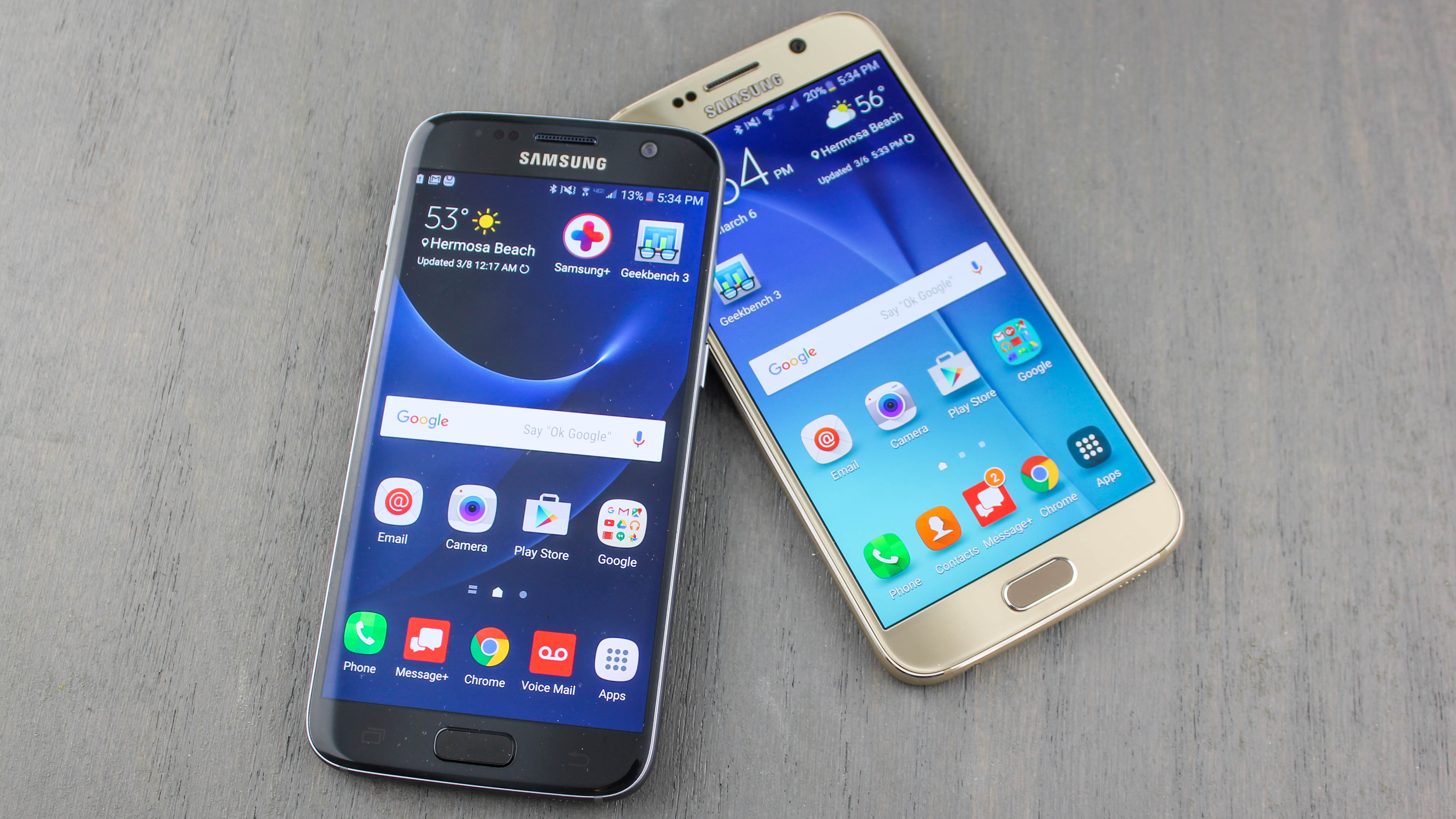
The Samsung Galaxy S7 appears to be almost identical to the Samsung Galaxy S6, though the name alone tells you that it's undoubtedly the better of the two phones.
In fact, upon closer inspection, it's better in almost all areas. It has the best camera, fastest processor, an always-on display and hidden features, like a microSD card slot and water resistance.
That said, the year-old Galaxy S6 has long been at the top of our best phones list for very good reasons: It's be a stellar performer in nearly all of these ways, and it's now cheaper.
Is the new Samsung phone worth the upgrade and upcharge? To give you a better idea, here's our in-depth Samsung Galaxy S7 vs Galaxy S6 comparison that lays it all out there for you.
Check out our Galaxy S7 vs Galaxy S6 video:
Design
Both the Samsung Galaxy S7 and Galaxy S6 fuse together a glass-and-metal design that looks and feels like a premium smartphone, more than enough to compete with the aluminum iPhone 6S and Nexus 6P.
As much as Samsung's two ornate Android phones are alike, there's an easy way tell the difference between their designs: the newer phone has a slightly curved back to it.
Get daily insight, inspiration and deals in your inbox
Sign up for breaking news, reviews, opinion, top tech deals, and more.
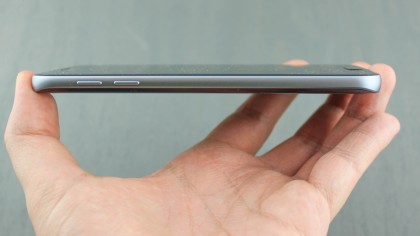
This minor change makes it significantly more comfortable to hold the Galaxy S7 in one hand, and it's an idea we first saw and liked in the larger Samsung Galaxy Note 5.
It's also easier to put down flat on a table. The rear S7's camera bump has been diminished compared to last year's phone, making it less prone to damage, like nicks and scrapes.
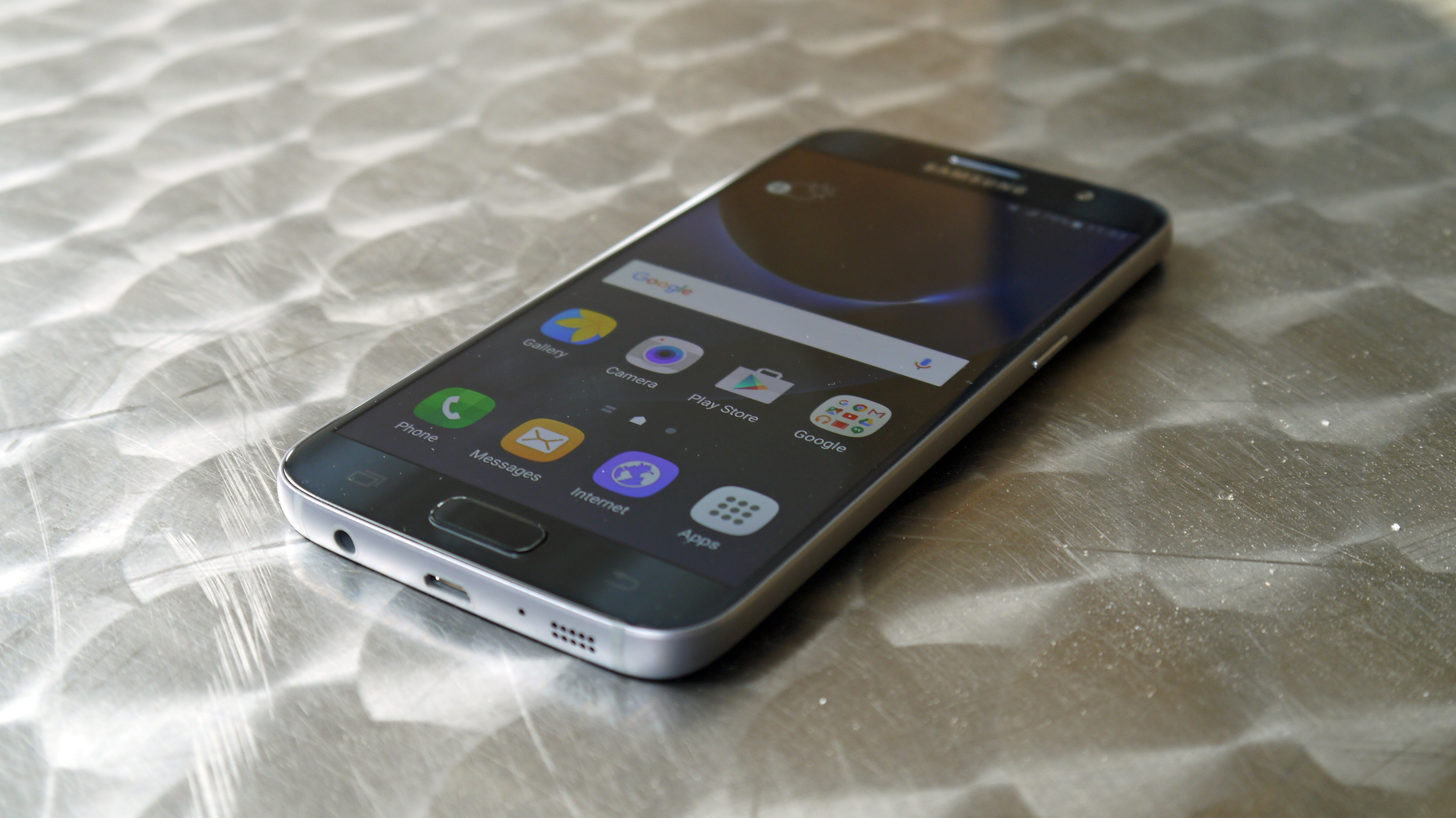
The fingerprint sensor embedded into the home button returns and so is the nano SIM card slot. But the slot has been moved from the side of the phone to the top of the frame, and it contains a very special, not-to-be-forgotten feature: a microSD card slot.
Expandable storage, sorely missing in the jump from the Galaxy S5 to the Galaxy S6, makes a comeback in the S7. So does a waterproof rating, now at IP68. There's still no removable battery, but it's best two of our three for the S7. The S6 swings and misses with all three.
Screen
Either Galaxy S you go with features one of the best smartphone displays available, and they're both a one-hand friendly 5.1 inches. You won't see differences when they're turned on.
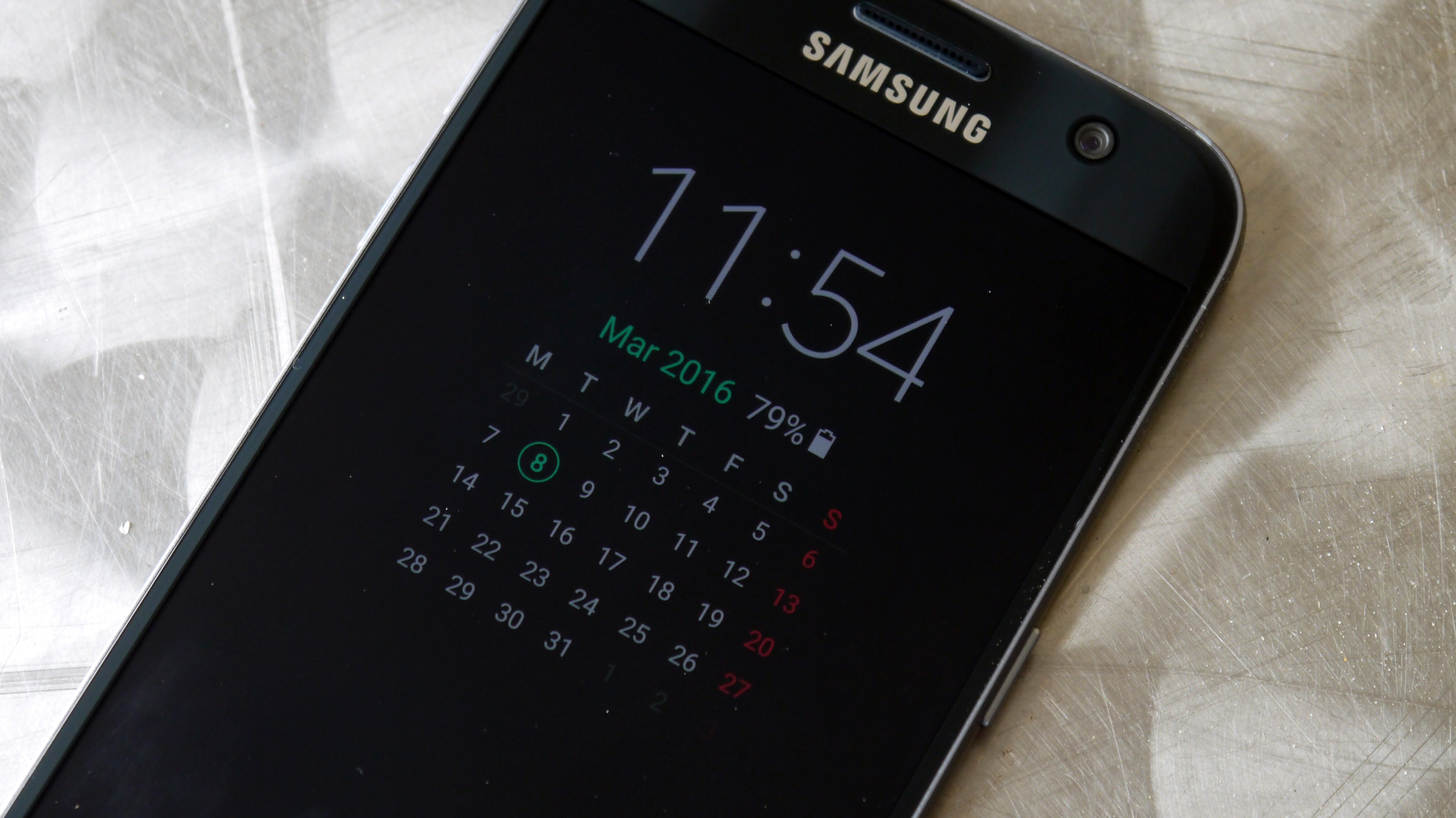
Samsung's Super AMOLED panels are quad HD, which amount to a pixel-rich 2,560x1,440 resolution with vibrant colors and excellent brightness levels, even in direct sunlight.
The real perk to the Galaxy S7 is when you put the phone to sleep. Its always-on display leaves a few pixels lit to show the time, date, battery life percentage and a handful of notification icons.
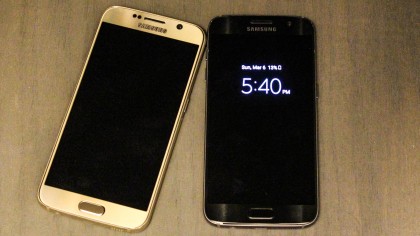
All of this glanceable information at-the-ready has prevented me from lighting up the entire S7 display, while I turned on S6 several times to check the time. It saves battery life on my phone and my smartwatch.
Interface
There's a lot of apprehension when it comes to Samsung's TouchWiz interface, which acts as an overlay to Google's Android operating system. But the S6 should have changed all of that.

Its menus became cleaner and looked more sophisticated in 2015, and the company doubled down on software polish for 2016. Maybe the word hasn't gotten out to S5 owners waiting to upgrade, maybe they've already moved onto a Nexus phone in disgust?
Samsung found a way to make its complicated interface customizable without appearing to be overbearing. While not completely clutter-free, there's a lot less to protest about on either phone.
The S7 further tweaks the icons with a flatter design and changes the quick settings pull-down menu, making it easier to access everything at once. The leftmost homescreen is once again Flipboard in the US. In Europe, it's been overtaken by a similar news curation app, Upday.
What I'm liking most is Android 6.0 Marshmallow and Samsung's Game Launcher. The newest version of Android brings onboard Google Now on Tap, a feature that scans what you're looking at and provides contextual background information and shortcuts.
Did someone young and "with it" mention a hot, new singer you never heard of in a message? Or maybe you cited a politician way before their time? Now on Tap does the heavy lifting of looking that information up - just hold down the home button. That's instead of copying the unfamiliar name, closing the messaging app, opening Chrome and pasting it into Google. It's handy when it works.
The Galaxy S6 doesn't have Google Now on Tap, so holding the home button throws you right into Google Now. Accessing Google Now is still possible on the S7, but now it's a two-step process. A large shortcut appears right above the home button when initiating Now on Tap.
Galaxy S6 might gain some of these new features when Android 6.0 Marshmallow eventually rolls out to their phone, but there's no telling when that will happen.
Performance
The Samsung Galaxy S6 was never a specs sheet slouch, but the Galaxy S7 is more powerful in every way, starting with its top-of-the-line processor, or processors.
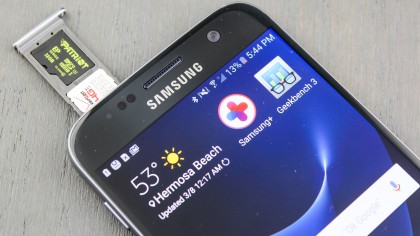
There are actually two flavors of the S7 System-on-a-Chip (and no, you can't order one over the other like you're configuring a computer). In the US, the phone marks the debut of Qualcomm's Snapdragon 820 processor. The rest of the world gets Samsung's Exynos 8890 chip.
Samsung's Exynos chip fared noticeably better than the new Snapdragon processor in our dual S7 benchmarking tests. But the speeds of both are once again record-breaking for an Android phone. Plus, the Qualcomm chip contains the essential bands for the US carriers, including CDMA. That's a requirement for Verizon and Sprint users to make calls.
The S7 packs in 4GB of RAM, like the the larger Samsung Galaxy Note 5, and that means you can open as many apps and Chrome tabs as you'd like without slowing down this smartphone powerhouse. Internal storage comes in just 32GB so far.
The Galaxy S6 comes close to the S7 speeds, and it has 64GB and 128GB options for internal storage in addition to the entry-level 32GB. Its Samsung-made Exynos 7420 processor, available worldwide, dominated every other Android phone out there in 2015, and it had a healthy 3GB of RAM. It's only being outclassed by its replacement, after a year of holding onto the best phone title.
Battery
There's a lot going on with both phones, especially on the S7 with its record-breaking specs and always-on display, but neither of these new features take a toll on the day-to-day battery life.
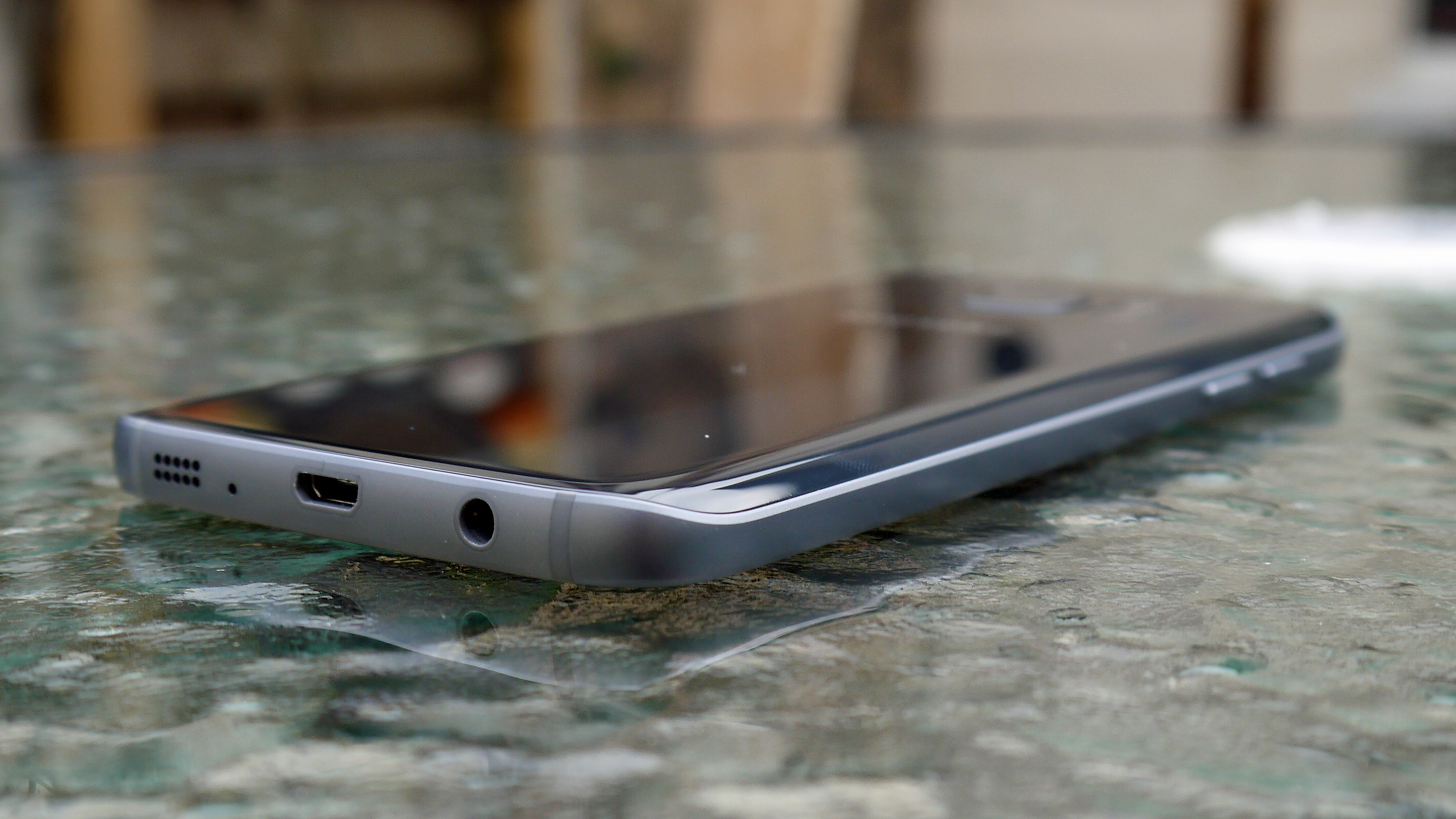
In fact, we got more than a full day out of the new phone, even with intensive testing going on. That's due to the fact that the S7 includes a increased battery size of 3000mAh. Dealing with the S6 means also dealing with its 2550mAh battery capacity.
Our 90-minute battery life test, which plays an HD movie at full brightness, took a full S7 battery down to 14%, or 16% for the US variant. That's the same result as the Galaxy S6, which lost 14% in an identical test.
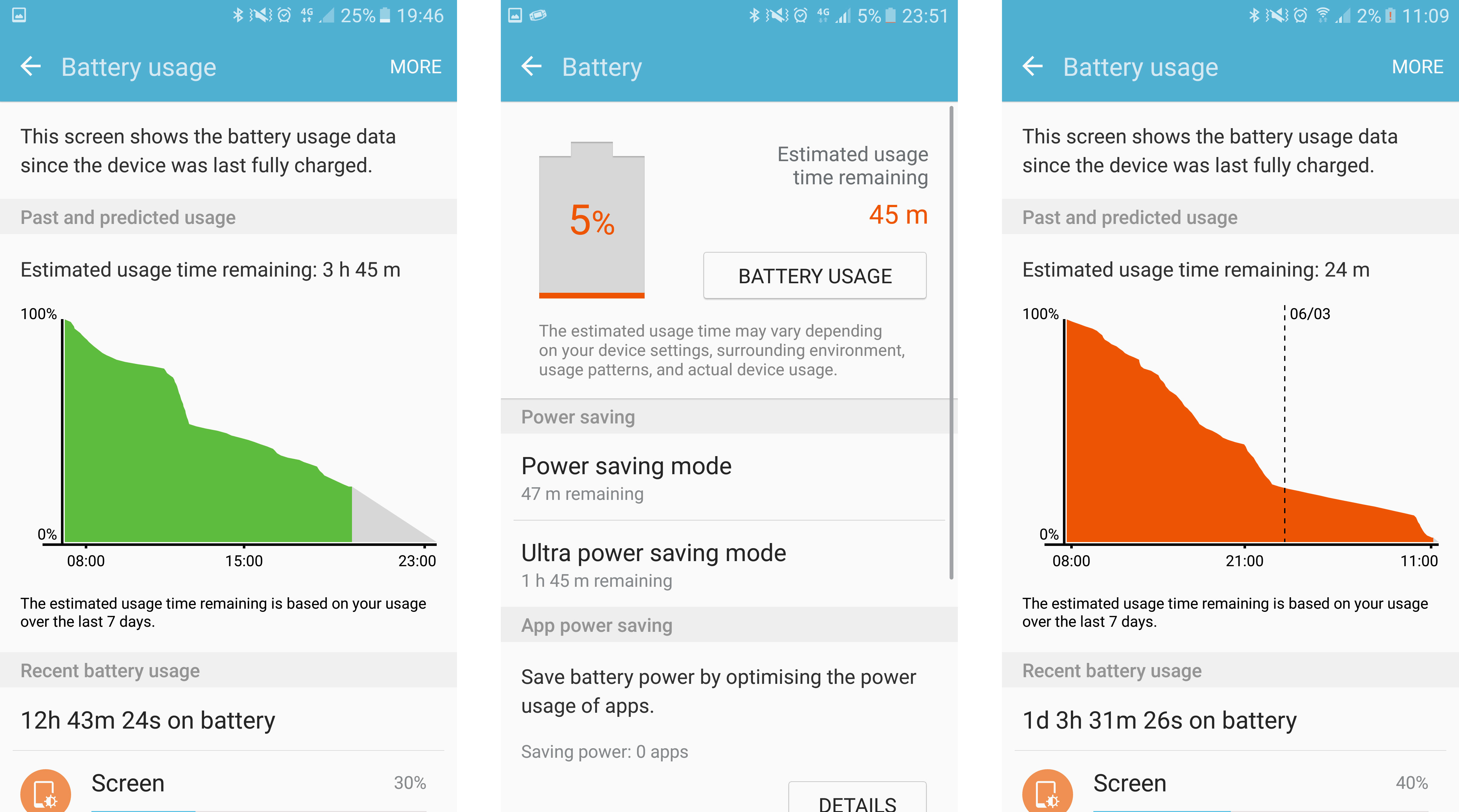
Standby time is where that shiny, new Samsung Galaxy S7 makes a difference, and makes a case for its bigger battery. When the phone is put to sleep, it doesn't wear down the battery quite as quickly.
While that always-on display does drain a small amount of juice every hour, it prevented me from waking the phone (and processor) to check the current time on multiple occasions.
You'll notice a small improvement in battery life on the S7 over the S6, but neither phone is perfect when it comes to going beyond a full day. The good news is that both feature Fast Charging, regaining about 25% of battery life in just 15 minutes and are fully juiced in 90 minutes.
Camera
A lot of people will have jumped straight to this section because they'll be confused: has Samsung really dropped the megapixel level from 16MP to 12MP from the S6 to the S7? Yes, but that's actually a good thing - it should lead to better snaps.
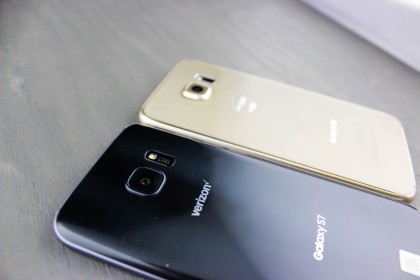
The company dialed back the megapixel count to 12MP in its rear camera, but increased the individual pixel size for better low light performance. It's that simple.
To put it in a more geeked-out way, its camera specs have been bumped up to 1.12 microns with a f/1.7 aperture, besting last year's already-impressive 1.4 micron pixel size and f/1.7 aperture.


If that went over your head, look at it this way: If each pixel is a window for light, shoving more into a sensor (that's limited to a certain width) stops as much light getting in. That means by lowering the megapixel count you'll get better pictures in low light situations, and faster too.


The S7 also focuses a lot faster than the S6, thanks to the new dual pixel sensor in the latest model. Samsung tries to make things a little confusing by claiming this is like the way two eyes will see an image when focusing, but in reality it just means that when you're trying to take a picture when moving, or of motion, you'll get results that are lot crisper.


That's exactly what I saw when testing the Samsung Galaxy S7 and Galaxy S6 around town. Both cameras did an amazing job at capturing wide landscape and narrowing in on detail in excellent light, but in softer or low light performance, the new phone excelled.
Media
It's no surprise that Samsung's flagship phones are multimedia powerhouses for movies and gaming, thanks to their rich, Super AMOLED displays. Even at 5.1 inches, it's great to watch Netflix on their small screens due to the brightness and color involved.
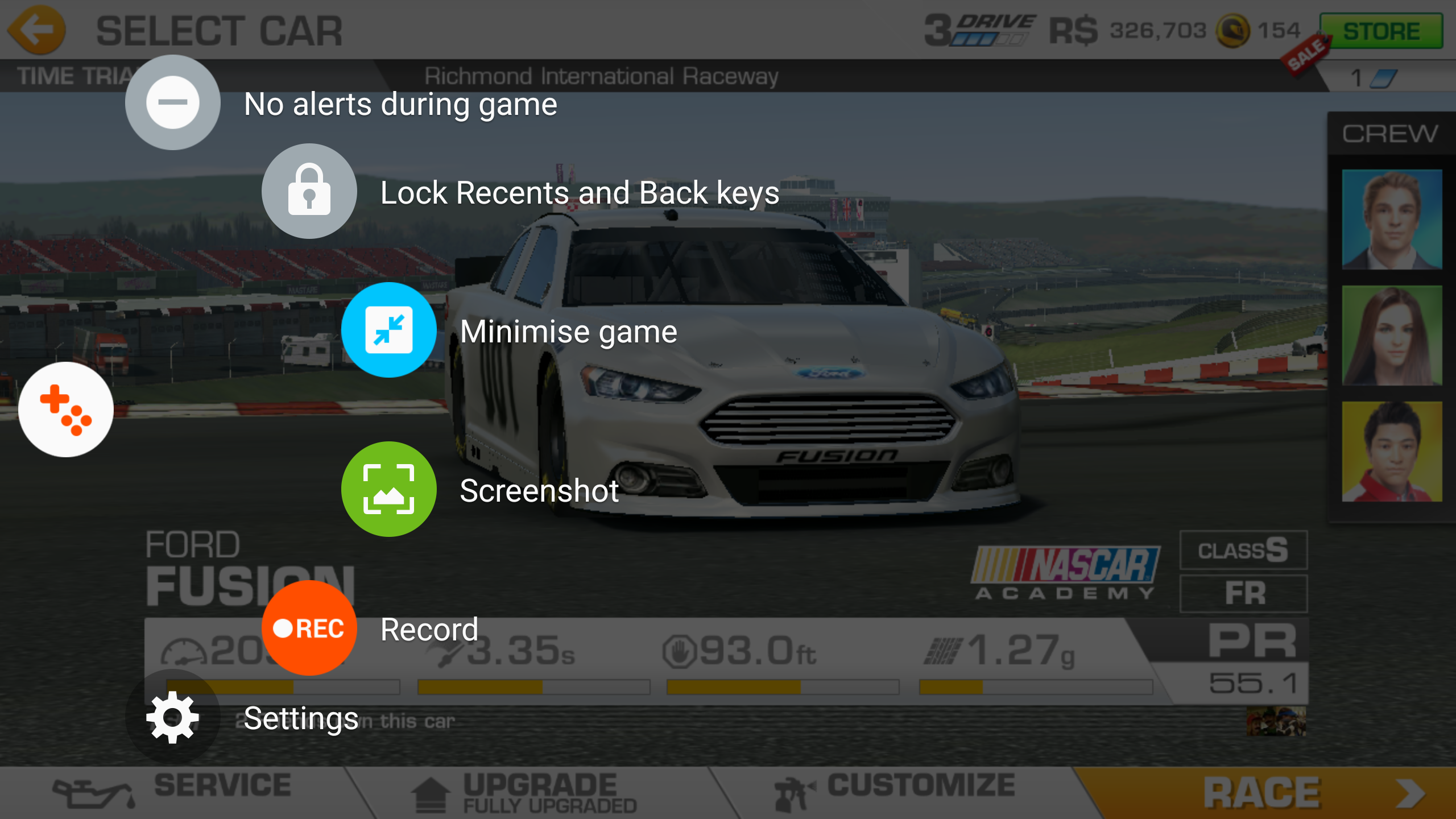
Not only does the S7 make gaming feel snappier when loading up an intensive, 3D app, it offers a new Game Launcher. Meant to be more than a container app, it also takes in-game screenshots, records live gameplay footage and can even broadcast you playing the game in a little Twitch-like window using the front-facing camera.
Samsung's S7-only gaming app suite is topped off with an ability to limit GPU performance in an effort to save battery life, disable all incoming notifications and lock the navigation keys (meaning the back, home and multitasking buttons along the bottom). This is incredibly handy for people (read: everyone) who accidentally hits these buttons during crucial gaming moments.
The S6 doesn't have these gaming perks, even if its screen looks every bit as good for games and movies. I also continue to be disappointed in Samsung's use of one speaker that shouts out the bottom of the phone's frame. There's no HTC BoomSound-like stereo grill on the S7 or S6. It does a good enough job for sound, but music is best played through a pair of headphones or a legitimate Bluetooth speaker.
While the speaker didn't wow me for music, the speakerphone and call quality did. I was able to transition from clear calls using the normal earpiece to the loud speakerphone without the person on the other end of the line ever knowing.
The Galaxy S6 had a noticeably hollower sound to its speakerphone, and my actual microphone wasn't as strong, according to the caller. It was good, but not as good as the S7.
Price
There's been a steady price drop for the Galaxy S6 in recent months, as it's made way for the jubilant S7 unveiling. Samsung's "next big thing" from a year ago no longer has a big price tag.
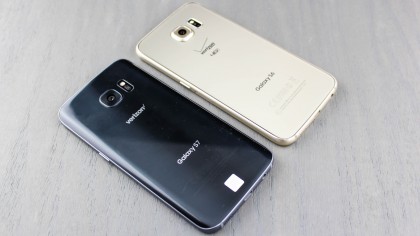
The S6 costs $19.50 a month or $584 without a contract, depending on the US carrier you go with. In the UK, it can be had for £350 SIM-free.
The S7, meanwhile, is making its debut at $26.50 or $794 without a two-year contract in the US. There's no unlocked version in the States just yet. It costs £569 in the UK when bought outright.
This is one area in which the S6 is the better deal, hands down. It's a great phone that will save you a bunch of upfront cash while at the store.
Verdict
The Samsung Galaxy S7 is an iterative, but meaningful update on the Samsung Galaxy S6. It boasts all of the basic under-the-hood improvements you'd expect: a better processor, more memory a superior camera and a bigger battery.
The camera, despite being 12MP, is the biggest draw thanks to its noticeably improved low-light performance. It's ideal for taking photos in bars and restaurants that are often too dark to really capture that memorable moment. Everyone can also appreciate the bigger battery and always-on display novelty.
That's not enough for everyone, though. The Samsung Galaxy S6 remains a steady winner, even in 2016, and its lower price makes it an attractive alternative, It has a solid camera, too, and great performance.
When investing in a new phone, You should always remember this when it comes to performance: you're not buying the phone you want right now, but the phone you want to use up to two years from now, before you trade it in for a new one. Which phone is going to hold you over until the Samsung Galaxy S9 launch?
